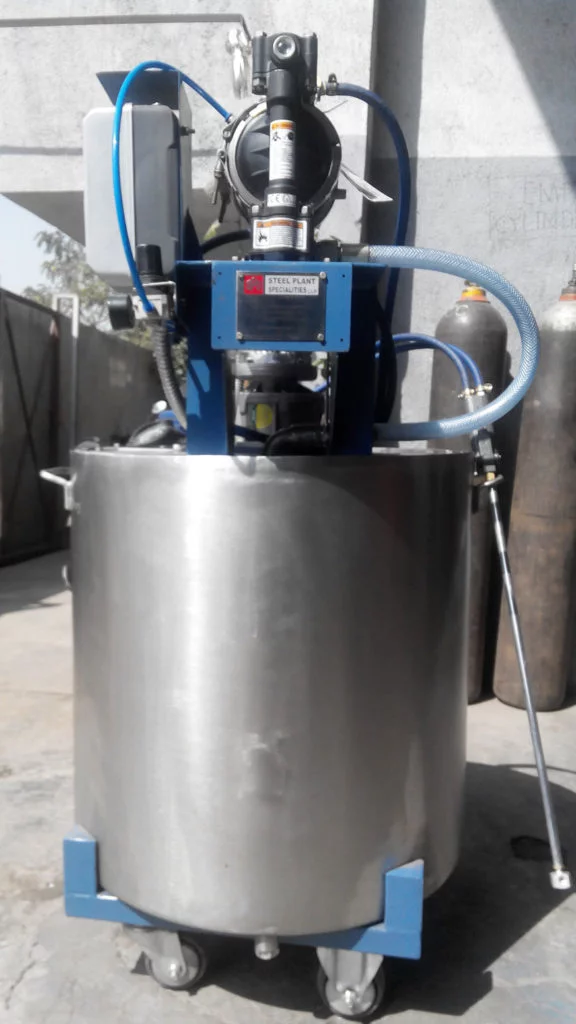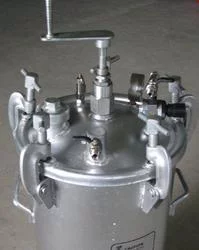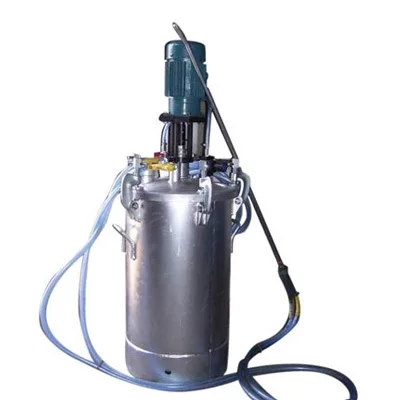Die Lubricant Spraying Systems
- Home
- Die Lubricant Spraying Systems
Hot Forging Die Lubrication by the use of Effective Spraying Systems

S. P. Shenoy
CEO of Steel Plant Specialities, India.
M.Tech. (Met. Engg.)
info@steelplantspecialities.com
Abstract
In closed die forging, use of effective spraying system enables benefits like proper die lubrication, maintenance of correct die temperature and prevention of over-heating or cooling of die, prevention of wastage of die lubricant, ease of forging production and ease of lubrication operation.
A number of forging companies are unable to use appropriate spraying systems due to reasons like operator inconvenience, frequent maintenance downtime of motor and spraying equipment, non-practical design of spraying system, high initial cost and recurring cost of spraying equipment, inability to train workmen regarding correct usage of spraying system, etc.
This article aims at reviewing the benefits of using spraying systems in hot forging die lubrication. Evaluation of various types of die lubricant spraying systems available in the market will be carried out. Shortcomings and benefits of most of the popular types of spraying systems will be listed. An innovative and proven effective die lubricant spraying system will be introduced.
Article
A range of environment friendly hot forging die lubricants are now available to the Indian forging industry. Water soluble lubricants without graphite are becoming increasingly popular for small to medium size forgings. For large, heavy forgings, graphite based lubricants and oil based lubricants continue to be used.
Environment friendly die lubricants with and without graphite are found to be very effective and economical when used with the appropriate spraying system. They facilitate zero pollution and a clean working environment on the forge shop floor. Use of appropriate die lubricant spraying system gathers much importance in the use of water based die lubricants. A correct spraying system ensures effective die lubrication, reduced wastage of lubricant and increased die life. Ease of operation of die lubricant spraying system determines its acceptability by forging production personnel. Maintenance of the lubricant spraying systems have posed a problem to many forging companies as unplanned downtime of spraying system results in immediate use of furnace oil or such polluting and costly alternatives.
A large number of forging companies are switching over from manual or conventional spraying systems to effective spraying systems manufactured by SPS to enable effective spraying of hot forging die lubricants on their dies. Let us have a quick look at the common forging die lubricant spraying systems available at present, and their pros and cons:
| Benefits | Diaphragm Pump tank with motor | Pressure feed tank without motor | Pressure feed tank with motor |
| Safe | Yes | No | No |
| Ability to deliver all types of die lubricants | Yes | No | Yes |
| Continuous automatic stirring / agitation of lubricant | Yes | No | Yes |
| Re-filling of die lubricant without forging production stoppage | Yes | No | No |
| Long life and low running costs | Yes | Yes | No |
| Zero unplanned downtime | No | Yes | No |
| Low maintenance | No | Yes | No |
| Low inventory costs | No | Yes | No |
| Economical (long term) | Yes | Yes | No |
Photographs indicating beginning of die wear on forging dies are given below.
1. Diaphragm pump type spraying system with motor: This spraying system is very common in large forge shops. The powerful diaphragm pump is capable of spraying up to 133 litres of high viscosity paints per minute. An even spray is assured. Diaphragm pumps can be powered by pneumatic air or electricity. Re-filling is very easy as the open tank can be topped up with lubricant as and when required. Continuous stirring of lubricant is achieved by a separate motor. This system is very effective where large volumes of die lubricant need to be sprayed continuously. Two forging presses can be serviced with one such spraying system by making simple modifications. Pros: Powerfully sprays high viscosity fluids. Refilling of lubricant in tank is very easy. Very safe as no pressurized tank is required. Cons: Expensive. High running cost as one additional motor and spares are required for stirring lubricant and diaphragm pump used for spraying the lubricant. Unplanned downtime.


2. Conventional pressure feed tank with hand stirring: This simple spraying system is functional and economical. It is powered by pneumatic air to pressurize the tank and spray the lubricant. Stirring is achieved by manually rotating the handle of the stirrer. Re-filling is time consuming and difficult as the entire lid of the system needs to be unscrewed and dismantled for re-filling. In case of graphite based lubricants, there is a tendency of graphite particles to settle at the bottom of the tank if not stirred continuously. The mixture quality of the lubricant will be affected. Hence, there is room for human error if the operator fails to stir the system manually at frequent intervals. Pros: Functional. Simple. Economical. Cons: Continuous stirring not possible and may affect lubricant properties. Re-filling is time consuming and requires correct spanners to open the lid.
3. Pressure feed tank with motor: This is the upgraded version of the conventional pressure feed tank. It is powered by pneumatic air to pressurize the tank and spray the lubricant. A motor is affixed on the tank so that continuous stirring of the forging die lubricant is achieved. The rest of the functioning of this system is the same as the conventional pressure feed tank. Addition of the motor invites problems of motor maintenance. However, even if the motor is not functional, the system can still be used for spraying lubricant. A risk of graphite particles settling at the bottom of the tank and affecting the lubricant mix will always prevail in such case. Pros: Functional. Offers continuous stirring. Economical compared to diaphragm pump type system. Cons: Re-filling is time consuming and requires correct spanners to open the lid. Additional motor adds to running costs. Unplanned motor downtime may affect lubricant properties.
Considering the pros and cons of all the popular die lubricant spraying systems, SPS has made a breakthrough in this area by designing a special spraying system. This has proven to be better, easier to use and economical.


This spraying system is powered by pneumatic air to pressurize the tank and spray the lubricant. Special internal mechanism ensures that the same compressed air that is used to pressurize the tank acts as an agitator to the lubricant. This ensures continuous mixing of the lubricant. Additional motor is not required for stirring; hence motor related problems are eliminated. Special design enables quick re-filling of die lubricant in less than a minute, without the use of any mechanical tools. However, forging production needs to be stopped. There are no user-serviced parts in this system. Unplanned downtime of spraying system is eliminated. No special inventory needs to be maintained for this system. Safety valve, pressure gauge and air pressure regulator ensure safety and ease of operation. Tank capacities of 45, 100 and 200 litres are available.
Pros: Ideal spraying system for using all types of forging die lubricants. Continuous stirring of lubricant is ensured at all times. Easy and quick re-filling of die lubricant is assured. Low maintenance as no user-serviced parts present. No inventory costs. Low running cost as no additional motor required. Economical. Cons: Safety is compromised or dependent on operators to maintain correct pressure, safety valves and pressure regulators. As water-based die lubricants are used, it leads to corrosion of MS body. This poses a risk of explosion of pressure feed tank. Such explosion is capable of flinging the lid of tank and tank itself with 90 psi pressure. This could cause serious injury. Production stoppage is encountered during tank refilling.
Though pressure feed tank spraying systems are much economical, they fall short on two very important aspects: Safety and Re-filling without stopping production.
All types of spraying systems are available with SPS. However, use of diaphragm pump type spraying system for hot forging die lubrication is strongly advised.
A quick comparison chart of all die lubricant spraying systems is provided below:
| Benefits | Diaphragm Pump tank with motor | Pressure feed tank without motor | Pressure feed tank with motor |
| Safe | Yes | No | No |
| Ability to deliver all types of die lubricants | Yes | No | Yes |
| Continuous automatic stirring / agitation of lubricant | Yes | No | Yes |
| Re-filling of die lubricant without forging production stoppage | Yes | No | No |
| Long life and low running costs | Yes | Yes | No |
| Zero unplanned downtime | No | Yes | No |
| Low maintenance | No | Yes | No |
| Low inventory costs | No | Yes | No |
| Economical (long term) | Yes | Yes | No |
Other accessories for correct die lubrication:
Double action sprayguns for effective die lubrication are available. Double-sided spraygun and single sided spray guns are commonly used for forging die lubrication. Customized nozzles for special applications as per requirement are developed by SPS.


Semi Automatic Spraying of Lubricant on Forging Dies through Fixed Nozzles and foot operated pedal:
Specially developed spraying nozzles are fastened close to or around the forging die at an angle such that the lubricant spray through the nozzles will land on the forging die. The spray is controlled by a foot operated pedal. This technique is a convenient substitute for sprayguns in hot forging die lubrication and ensures complete safety. Additional workman solely for purpose of spraying lubricant is not necessary.

Nozzles for semi automatic spray

Foot operated pedal to control air and lubricant release through nozzles.
Use of effective die lubricant spraying system manufactured by SPS has proven to enable the following benefits:
- No sticking of forgings. Smooth production.
- Effective lubrication and cooling of die. This leads to increase in die life.
- Quick re-filling of spraying system, without forging production stoppage.
- Very less maintenance of spraying system required.
- Affordable and minimal maintenance cost of forging die lubricant spraying system.


